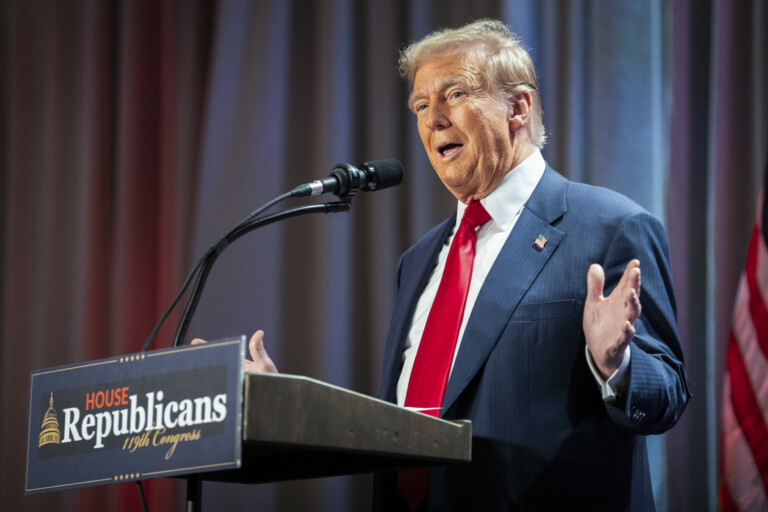Why is US health care like this?
Vox reader Mike Lovely asks: Why does the US keep creating new health insurance programs (CHIP, ACA, Medicaid expansion alternatives, etc.) instead of consolidating them into one big program where all insurer carriers participate and all people pick their coverage?
Health insurance in America is a constellation of brands and acronyms: Medicare, Medicaid, the VA, TriCare, the ACA, CHIP, United Healthcare, BCBS. I got a headache just listing them.
In most rich countries, people don’t have to worry about sifting through a dozen different health plans — and they don’t live in fear of losing their health care after losing a job, and they receive more affordable, higher-quality care than Americans do. The paradox of the world’s wealthiest nation having one of the weakest health systems among developed nations has long been a vexing policy problem — without an easy solution.
The newsletter is part of Vox’s Explain It to Me. Each week, we tackle a question from our audience and deliver a digestible explainer from one of our journalists. Have a question you want us to answer? Ask us here.
Why does it work this way? It was more an accident of history and culture than an intentional plan. Today, the American system works just well enough — which is not to say it works very well — that building a better one just doesn’t rise to the level of political priority.
Why does US health insurance work this way?
American health insurance, as we think of it today, started to take shape in the 1920s, as the medical profession was being standardized and modern hospitals were being built. Some employers started offering payments for hospital-based services as a perk for their workers. Companies had large groups of employees, some in good health and some in bad, to spread the risk and make the finances work much like modern-day insurance does.
This system soon became entrenched enough that President Franklin D. Roosevelt bypassed plans to include national health insurance as part of the New Deal. Then came World War II, along with government-mandated wage controls for employees in the private sector to keep the war machine moving. Barred from offering raises to motivate their workers, companies started pumping up their health benefits — and the government agreed to exempt those benefits both from wage controls and taxes.
By the 1950s, employer-sponsored insurance had become popular among those who received it and progressive labor unions urged the government to make the tax exemption permanent. Congress agreed, enshrining in 1954 the subsidy for company health plans in federal law. Doctors and hospitals, whose industry was growing into the leviathan that it is today, became accustomed to working with private insurers rather than with the government directly.
Today, these work-based health plans still cover roughly half of all Americans.
So far, so good: But there’s a downside, right?
The problem with the employer-based system was it left out too many people because they didn’t work or didn’t have a job that offered health insurance. To start filling in the gaps, in 1965, Congress created Medicare and Medicaid to cover two of the biggest groups of people who lacked coverage: seniors and people in poverty.
After that expansion, we had a system that covered most Americans — which made it hard to change, because people feared losing what they had.
Those fears, supported by the medical industry’s campaign against “socialized medicine,” doomed the health care overhauls proposed by presidents Richard Nixon and Bill Clinton that would have consolidated most Americans into a national insurance scheme. Certain tendencies in American culture — consumerism and trust in private markets — made it easier to persuade the public that they’d lose under a government-run health plan.
Meanwhile, the US health care system still had obvious holes. Rather than threaten the status quo, policymakers added new patches.
CHIP was approved in the 1990s, covering children of working-class families whose incomes were not low enough to get Medicaid. (Their parents, however, were often left without any coverage at all.) The 2010 Affordable Care Act, also known as Obamacare, was designed to fill that gap by covering people who didn’t receive health insurance through their jobs but didn’t qualify for Medicaid.
Yet even after a half-dozen rounds of incremental health reform over five decades, about one in 12 people in the US lack health coverage and Americans are much more likely than people in other developed nations to say they skip medical care because of the cost.
How do other countries provide health insurance?
Other countries built their health care systems more deliberately.
After World War II, the United Kingdom sought to extend medical security to all its citizens, creating the National Health Service; many other European governments followed suit.
A half-century later, another wealthy island nation made the same choice. Taiwan, building a modern democracy after decades of authoritarian rule, scrapped a fractured, inequitable health system to set up a national insurance program that would cover everyone. It was a proclamation of solidarity after a tumultuous military dictatorship had come to an end.
Not all countries have opted for a single government program, but their systems are still simpler than America’s and cover the entire population. In 2006, the Netherlands opted to trade a dysfunctional two-tiered insurance system for a universal program that relied on private coverage but was nevertheless designed to insure everybody. The uninsured rate there today is less than 1 percent (some people opt out).
But the US? We’ve never paused to build a fairer, simpler, uniform health system.
Read More from Vox
As Uwe Reinhardt, the late preeminent health care economist at Princeton, put it, “Canada and virtually all European and Asian developed nations have reached, decades ago, a political consensus to treat health care as a social good. By contrast, we in the United States have never reached a politically dominant consensus on the issue.”
Will we ever make US health care simpler?
The 2020 Democratic presidential primary, in which several candidates released “Medicare-for-all” proposals, may have been the high-water mark for Americans who want to see a streamlined health insurance system that covers everyone in one program.
First championed by Sen. Bernie Sanders (I-VT), Medicare-for-all would cover all Americans through a federal government insurance plan with minimal out-of-pocket costs. But moderates balked at the proposal. Joe Biden pledged to pursue his iterative reforms instead, and Kamala Harris is now taking the same tack.
A public option, which would give more people the choice to participate in a government insurance program like Medicare or Medicaid, seems more attainable than single-payer. But Biden did not even try to pass that policy, despite campaigning on it, because he did not want to jeopardize his other policy priorities with a politically risky health care proposal that could draw medical industry opposition.
Still, if you were to ask me what a path to a saner health care system might look like, that would be the model: voluntary adoption among Americans. Public option proponents have long argued that if the government could compete directly with private insurers, it could win. Three states have recently implemented their own public options — so we may soon get an idea of whether or not that proposition is true.
In my own reporting, I have heard that employers are rethinking whether they want to bear the costly, burdensome responsibility of managing Americans’ access to health care. Some companies have dropped their plans and instead opted to pay for their workers to buy insurance on the ACA marketplaces.
It could be that the flaws in American health care will eventually lead us to the same point that virtually all of our peer countries have reached, looking to start over with a universal program. More likely, at least in the near term, is that we’ll keep our needlessly complicated system, make marginal improvements, and hope for the best.
This story was featured in the Explain It to Me newsletter. Sign up here. For more from Explain It to Me, check out the podcast. New episodes drop every Wednesday.




